Podcast: Play in new window | Download (37.0MB)
Subscribe: Apple Podcasts | Spotify | Amazon Music | Android | Pandora | iHeartRadio | JioSaavn | Podcast Index | Email | TuneIn | RSS | More
By Davy Crockett
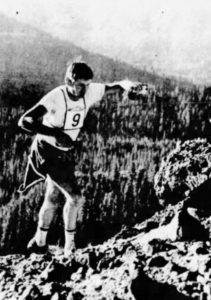
The establishment of the Western States Endurance Run (Western States 100) in 1977 was one of the most important pivotal events in the history of ultrarunning. During the next decade, the existing ultrarunning sport experienced a major shift from roads and tracks to trails and mountains. Other 100-mile races were spawned from the Western States 100, patterning their mountain race formats and practices after those established by Western States. A new generation of ultrarunners came into the sport and the Western States Endurance Run became the most famous mountain trail 100-miler.
Western States validly proclaims that it owns 100-mile racing’s richest and most compelling history. “Western States has been home to some of the sport’s most stirring and legendary competitions and has spurred the capacity of spirit of all runners, of all abilities and from all walks of life, from all over the globe. Western States remains one of the undisputed crown jewels of human endurance.”
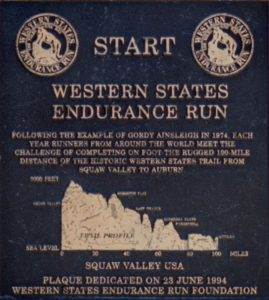



The Western States Endurance Run grew out of the Western States Endurance Ride in the Sierras, in California. That equestrian event also has quite a bit of folklore attached to it. But this fact is clear, there would not have been a Run if the Ride had not existed. The riders who were organizers of the run had the experience and wisdom to establish the Western State Endurance Run.
I thought it would be interesting and helpful to look at many of these myths and some clarifying truths about the origin story of both the Western States Trail Ride and Western States Endurance Run. Major events like these, at times approach “mythical” status and place too much credit on certain individuals, pushing aside heritage and others who paved the way for these historical events to take place. The intent of this episode it to have some fun looking at the facts and get the reader to think about history.
Truth: Before Gordy Ainsleigh made his historic run in 1974, more than 1,000 people had already run 100 miles in under 24 hours on roads, tracks, and trails.
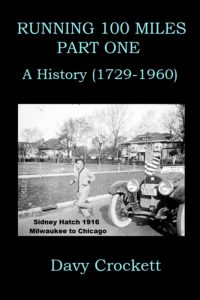

Myth #1: The Western States Trail runs all the way to Salt Lake City, Utah
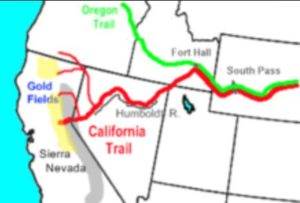

Myth #2: Wendell Robie researched and discovered the Western States Trail
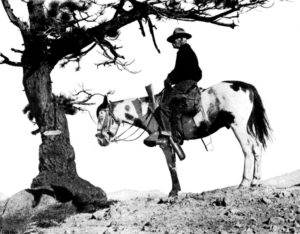

Who rediscovered this mining and emigrant trail? Another person did this. He has been mostly forgotten and not mentioned in most histories about Western States. During early 1930, Robert Montgomery Watson (1854-1932), a Lake Tahoe lawman, located and mapped out the old emigrant/miner road that was used before the railroad arrived. He also constructed the granite monument near Emigrant Pass. The rediscovered trail was initially named “Auburn-Lake Tahoe Riding Trail.” Over the years, this trail would be used frequently by horsemen. Robie should not be given the credit for rediscovering the trail. Watson deserves that credit.
Myth #3: The first riding event held on the Western States Trail was in 1955
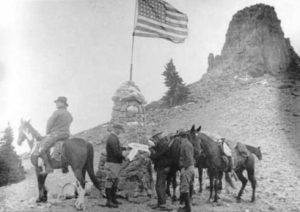

Few know this fact, but many years before what is recognized as the first ride on the trail, another riding event took place on September 22, 1931. The “Native Sons of the Golden West” from Auburn, sponsored a ride on the historic route that Watson had recently mapped out. It was open to all and there was a great deal of planning for it. The riders were initially led by Robie and then guided by Watson. The ride was documented with a silent film camera.
The main purpose of the 1931 ride was to place markers on the trail as instructed by Watson so it could easily be used by riders in the years to come. They took 2.5 days to cover the trail. Robie’s official biography states that Robie read about Watson mapping out the trail and then went to find it. That isn’t correct. Robie knew Watson well and helped Watson mark the trail in 1931.
Myth #4: Wendell Robie organized the first Western States Trail Ride in 1955 on a bet
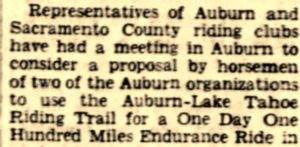

It was very likely that he debated with others about this point, but the ride didn’t happen on a whim to win a bet.
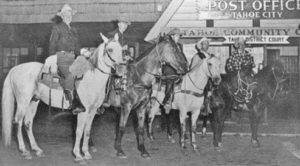

On January 20, 1955, a historic meeting was held in Auburn, California. Representatives of three Auburn and Sacramento County riding clubs met to discuss plans for a large three-day endurance ride event with different types of rides. Included was a three-day 100-mile endurance ride, which was the typical format during those years, but it was also proposed that there be a 100-mile, one-day Endurance Ride on the last day.
Robie was at this meeting and was likely the person who brought forward a proposal for a one-day ride. The idea was debated by skeptics and Robie was assigned to the committee for that ride. The “Auburn-Lake Tahoe Riding Trail” was discussed and selected. “Horsemen familiar with the route claim it is the best riding trail to cross the Sierra which is left with natural surroundings and without paved roads and automobiles.” The 1955 riding event was held and called the “Tahoe to Auburn Trail Ride” and open to all.
Myth #5: Wendell Robie was the founder of the first Western State Trail Ride
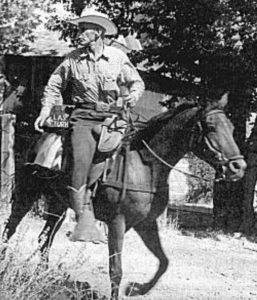

Well, this could be a truth, but contemporary newspapers called Robie, “one of the organizers” of the ride, not the founder. But as Robie’s legend grew, he was perhaps mistakenly given all the credit for organizing the first Ride and later called “the founder.” The truth is that there were many forgotten individuals who organized the event. Lavelle Shields (1907-1966) was the chairman of the 1955 Ride. But there is little doubt that Robie was the main individual who pushed for the one-day 100-mile event and helped make it happen. He also was the driving force to keep it going the next year. I think it safe to call Robie the founder of the Ride.
Myth #6: The Pony Express once rode on the Western States Trail.
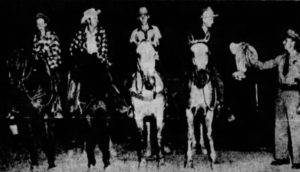

The Pony Express never rode on the Western States Trail. The Pony Express Trail was on the other side of Lake Tahoe. Robie loved Pony Express history. As part of the early years of the Western States Trail Ride, Robie would do a reenactment of the Pony Express carrying a mail pouch to be delivered to Auburn. In its second year, when Robie took control of the 1956 Ride, it was named the “Pony Express Ride.” In 1957 Robie renamed the Ride to: “Western States 100 Miles One Day Pony Express Ride.”
Robie knew that the 1960 Winter Olympic Games, held at nearby Squaw Valley, could really bring significant attention to his Ride. He hoped to capitalize on it with the 100-year anniversary of the Pony Express. An editorial criticized Robie with fraud on plans for a 1960 Pony Express 100-year commemoration because the Pony Express never passed through the county or rode on the Western States Trail. Robie countered that he knew mail was delivered between the mining camps using the trail before the Pony Express was established and felt justified.
Myth #7: The Western States Trail starts at Squaw Valley (Olympic Valley)
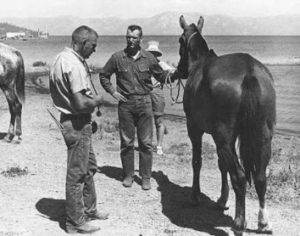

Frequently articles about Western States beginnings state that the 1955 original ride started from Squaw Valley. No, the trail started at Lake Tahoe. By 1970, the 16th annual Western States Trail Ride was very popular and included international entries. That year there were 169 starters and the start was moved to Squaw Valley because development over the years at Lake Tahoe had greatly reduced the amount of open space there to accommodate the start area. The move cut out seven miles of the course. A Duncan Canyon Trail section was added before Robinson Flat to help compensate. Riders could spend the night before the ride at the 1960 Olympic Village dorms that had fallen into disrepair.
Myth #8: Gordy Ainsleigh was the first to cover the Western States Trail Ride on foot during the Western States Trail Ride (Tevis Cup)
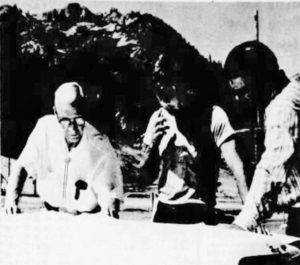

Gordy Ainsleigh was the eighth person to cover the Western States Trail on foot during the Ride, but he was the first to finish it in under 24 hours.
In 1972, two years before Gordy Ainsleigh achieved his historic run, Robie allowed twenty soldiers from Fort Riley Kansas to come and test their endurance ability to try to cover the course on foot during the Ride. Their goal was to complete it in less than 48 hours.
As the Vietnam War was winding down, an “adventure team” had been organized at the Fort and they sought for a very challenging test. Mary McCarthy (the wife of Captain Joseph McCarthy who was on the adventure team) had finished the Western States Trail Ride in 1967. McCarthy brought forward the idea to march the Western States Trail.
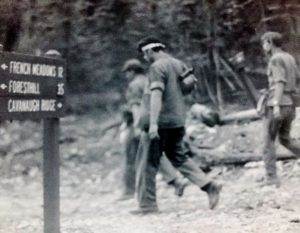

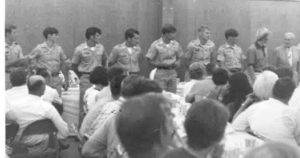

Six finished with a time of 44:54 and another soldier finished in 46:49. At the awards banquet that Sunday evening, the finishing soldiers were presented with many awards including a trophy for the “first finishers on foot” prepared by Robie. One soldier said, “It’s a once in a lifetime thing! I’d never do it again unless I had to, but what a great sense of satisfaction to have finished.” The Fort Riley Post stated, “This was the first time the trail had been competitively traveled on foot with a time factor involved.” See Western States 100 on Foot: The Forgotten First Finishers to read details of their historic march.
These forgotten finishers of the Western States course in 1972 were: Larry Hall, Gregory Belgarde, Michael Paduano, Jon Johanson, David E. Lenau, and Kenneth Kruzel in 44:54 and Michael Savage in 46:49.
Myth #9: The history of the 1972 march is “sketchy at best.”
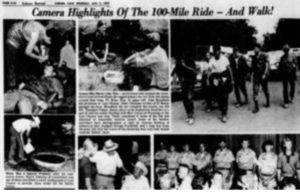

Both soldiers and horse riders interviewed for the 2018 article remembered the event and shared their experiences.
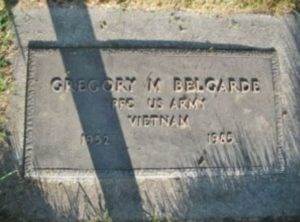

Interviews with the soldiers, late in life, in 2017 and 2018 were delightful! They were so kind and gave candid, honest responses to questions. When one of the soldiers was told that someone wanted to talk to him about the March, he searched his memory and started to laugh. He had never heard of the Western States Endurance Run but was thrilled to learn that he was a pioneer of the Run.
None of them went on to participate in endurance sports. Sadly, some of them have passed away, but it was wonderful and emotional to find their families and share the story of what their fathers accomplished.
The “rumor” about taking a short cut was twisted from the “sketchy” 7,500-word details of the 1972 march. Some of the teams of three soldiers became a bit competitive. One soldier couldn’t understand how another group leap-frogged them during the night. After interviews, it was concluded that a wrong turn was likely taken by one group who put in bonus miles while the other group moved forward on the correct route with the guide. In 2023, Western States 100 finally started to acknowledge that the soldiers were the first to cover the trail on foot during the Tevis Cup.
Myth #10: Gordy Ainsleigh’s horse went lame right before the 1974 Ride so he just ran it
These details seem to always be mixed up by those trying to tell the story of Ainsleigh’s historic run. He had finished the Western States Trail Ride (also called The Tevis Cup) twice previously, and in 1973, he rode again, but only made it to Robinson Flat (mile 30). His horse became lame that year, he couldn’t continue, and DNFed the 1973 race.
Ainsleigh gave away that horse and intended to ride again in 1974 but procrastinated finding another horse. Dru Barner, Robie’s assistant, knowing that the soldiers covered the course on foot two years earlier, suggested and encouraged Ainsleigh to run the course on foot, to attempt to finish it in under 24-hours. She said to him, “We’re all wondering when you’re going to leave the horse behind and just do it on foot.”
Robie had his doubts if Ainsleigh could do it. He said, “It is probably a universal opinion that it is beyond the powers of human endurance to span the 100 miles of this rough mountainous trail on foot in a period of 24 hours, but Gordy probably will make one or two of the control stations within the operational schedule.”
Truth: Gordy Ainsleigh was the first cover the Western States Trail Ride course in under 24 hours.
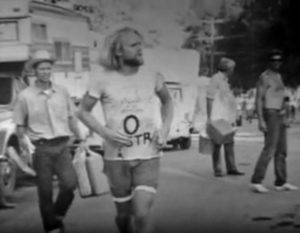

On 1974 race morning, Ainsleigh was given a good head start on the horses and tried to stay ahead of most of them for the first 30 miles or so to Robinson Flat. With all the single-track trails in that section he didn’t want to be delayed by stepping off the trail to let horses go by, so he initially ran faster than planned. The horses then started to pass him as he slowed, but he passed them again as they slowed and took their mandatory rest stops.
The day before, he dropped off Gatorade at various points on the course but didn’t carry much with him. A kind timing crew gave him canned peaches at Last Chance and at Devil’s Thumb as he was really struggling in the 107-degree heat. He had decided to quit because he was so drained and felt so weak. His sister was stopped there with her lame horse and recognized that he was dehydrated and suffering from hyponatremia. She revived him with salt and water. Thirty minutes later, he was on his way again.
From Michigan Bluff to the finish, he “panhandled” for food and liquids from plenty of people on the course. With 20 miles to go, he asked for a guide rider to help pace him to the finish. Many people were curious and betting on whether he could finish by 24 hours. As the finish came closer, he had been passed by the majority of the horses and was running amidst the riders and horses struggling to make the 24-hour cutoff in time.
At the finish, at McCann Stadium on the Gold Country Fairgrounds in Auburn, there was great anticipation whether Gordy would finish by 24 hours. Around 4:30 a.m., exciting news arrived that Ainsleigh was close to the finish. He entered the stadium, did a somersault and headstands before the finish line, and crossed with a time of 23:42. There were lots of cheers and congratulations.
While Ainsleigh wasn’t the first to cover the course on foot, he was the first to prove that it could be run in less than 24 hours which would eventually convince Robie to organize a 100-mile run. Ainsleigh’s legacy as part of Western States 100 history is significant and not diminished by the soldiers 1972 march.
Myth #11: Gordy Ainsleigh was the first to run 100 miles on mountain trails in less than 24 hours.
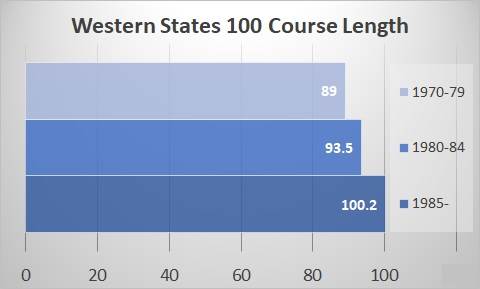

Myth #12: Western States is the world’s first 100-mile trail race
Was Western States the first 100-mile race as so many people state? No, there were many, many 100-mile races before Western States. The world record for 100 miles when Western States 100 began was 11:38:00. The American record was 12:45:00.
Is it the world’s first 100-mile trail race?
You have to be careful with absolute claims like this. The first problem is the definition for a trail race. To be a trail race, must it have no pavement? Must it be all single track? How much dirt road is acceptable? Is this splitting hairs? Well, the point for all this is that the 100-mile distance was competed on dirt roads well before Western States 100 came into existence. One very old example took place in 1806 when Robert Barclay Allardice and William Cross of Great Britain completed 100-miles in 19 hours on dirt roads in Scotland from Ury to Crathynaird and back.
Is it the world’s first 100-mile mountain trail race?
In 1906, a mountainous trail race was held in Mexico from Bocoyna to Minaca and back, a distance of about 110 miles. The race was organized by American railroad contractors, who were building a mining railroad near the Tarahumara Indian tribe. Two Tarahumaras competed. The winner finished in an amazing 16 hours and awarded $100 by the Americans.
Then you have the problem that Western States wasn’t originally close to 100 miles in 1977. There are at least nine other trail ultras that are older and held for more years than Western States. There are two other 100-mile races that are still held that are older than Western States 100.
To be totally accurate, perhaps this absolute statement works: “Western States is the oldest mountain trail race in America that is still held. ” Old Dominion 100 is the oldest 100-miler that is still being held, not Western States because when Old Dominion started in 1979, Western States was 89 miles and was not yet a 100-miler.
Myth #13: Gordy Ainsleigh was the founder of the Western States 100
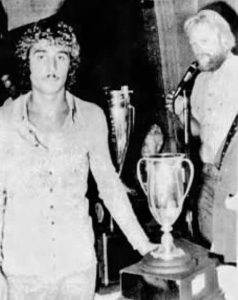

Ainsleigh was not the founder of Western States 100, Wendell Robie was the founder. Robie was the one who declared that it was time to establish a formal 100-mile run and put his resources behind it. Ainsleigh had hoped that he would be appointed as the race director for the 1977 race, but he was not. It was said that Ainsleigh did not have the organizational skills and the vision to make the race truly successful. He was even proposing a requirement that entrants had to have completed a 3:15 marathon that would have excluded most ultrarunners. Thankfully, that didn’t happen. Others were appointed to organize Western States 100 in 1977. Gordy did participate, was the marketing icon, and handed out awards.
For the second year of the race, in 1978, Robie organized the Western States Endurance Run Board of Governors to take over race management. Ainsleigh wasn’t on that board but became the important marketing icon for the race and loved telling his story and getting attention. The board was determined to “cement Gordy’s place in history” and thus he was incorrectly credited in the press for years as being the first to cover the course on foot.
Myth #14: The first year of the race was 1974
The Western States Endurance Run was organized in 1977. That was the first year of the race. Yes, in the official Western States results, there are included some finishers prior to 1977, but they should not be listed. There was no foot race for those years and those individuals did a solo runs, mostly self-supported, on the course. For some reason, the early Western States Board chose to handpick some of their friends to include in the results prior to the first year of the race, including Gordy Ainsleigh’s solo run. This was done retroactively for marketing purposes. However, they left out other individuals who also covered the course on foot during the Tevis Cup. Any results prior to 1977 are not official Western States 100 finishes. All this causes confusion because people sometimes think the race started in 1974.
Myth #15: Western States 100 has been held for 50 years.
How many years has Western States 100 been held? That is a confusing issue because at times Western States has curiously considered 1974-1976 as race years too, even though it wasn’t organized as a foot race until 1977. Thus, you will get different answers. In 2023, Western States celebrated its 50th year, and many called it the 50th anniversary which made no sense at all. 2024 will be its 46th year. In 2008, the race was cancelled because of terrible forest fire smoke on the course and the 2020 race was cancelled due to the pandemic.
Myth #16: Gordy Ainsleigh invented the sport of trail ultrarunning
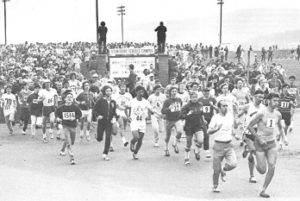

This is Ainsleigh’s claim. On his blog he once stated, “I originated the Western States 100-Mile Run and the sport of ultramarathon trail running,” Trail ultrarunning existed decades before Ainsleigh was even born. One must remember that in the early 1900s, pavement did not exist all over the country. Many ultramarathons were conducted on trails and dirt roads including the famous races across America in 1928 and 1929 crossing over mountains. The oldest ultramarathon, Comrades in South Africa, started on trails and dirt roads in the 1920s. Other very long trail races were conducted on trails in Canada during the 1930s. In the 1950s the 110-mile stage race on Padre Island was all off-road. In 1973, the year before Gordy Ainsleigh ran Western States without his horse, there were 1,724 runners who ran in the JFK 50-miler, which was the largest trail ultramarathon ever run in the United States.
The Tarahumara in Mexico have been conducting mountain trail ultras for generations. A very early mountain trail 100 was a women’s race conducted in 1865 on a 7-mile trail loop around a mountain that stood between two Tarahumara villages. Eight women ran. The course was carefully measured, and guards were posted on the course to make sure it was competed fairly because wagers were huge. Two women from one village finished in 13:25. That is just one of many examples where the Tarahumara have been racing mountain trails for decades.
For the 2016 Unbreakable video Ainsleigh boasted over-the-top claims, “I’m a legend and I didn’t have to die to become one, because I started the sport of ultramarathon trail running. I’m the founder of trail ultrarunning. I think there is a real question if we would have trail ultrarunning at these distances if I would not have done it.”
Ainsleigh did not invent the sport of trail ultrarunning. He helped start it in Northern California, but that is all. He deserves and has earned great respect for his contribution to the sport but there is no reason to overstate it. His place in history stands on its own.
Truth: The 1977 run was the only year when the run was held concurrently with the Ride.


In 1977, race day turned out to be the hottest day of the year. 200 riders and 14 runners started. If a runner wanted to pass a rider they would yell “Trail.” Andy Gonzales won in 22:57. Only three runners finished. The other two finished in more than 24 hours. That helped race staff to decide to extend the 1978 finish cutoff time to 30 hours. Because of the problems with crowding on the single-track sections of the trail, in 1978 the Run was moved to a different day from the Ride.
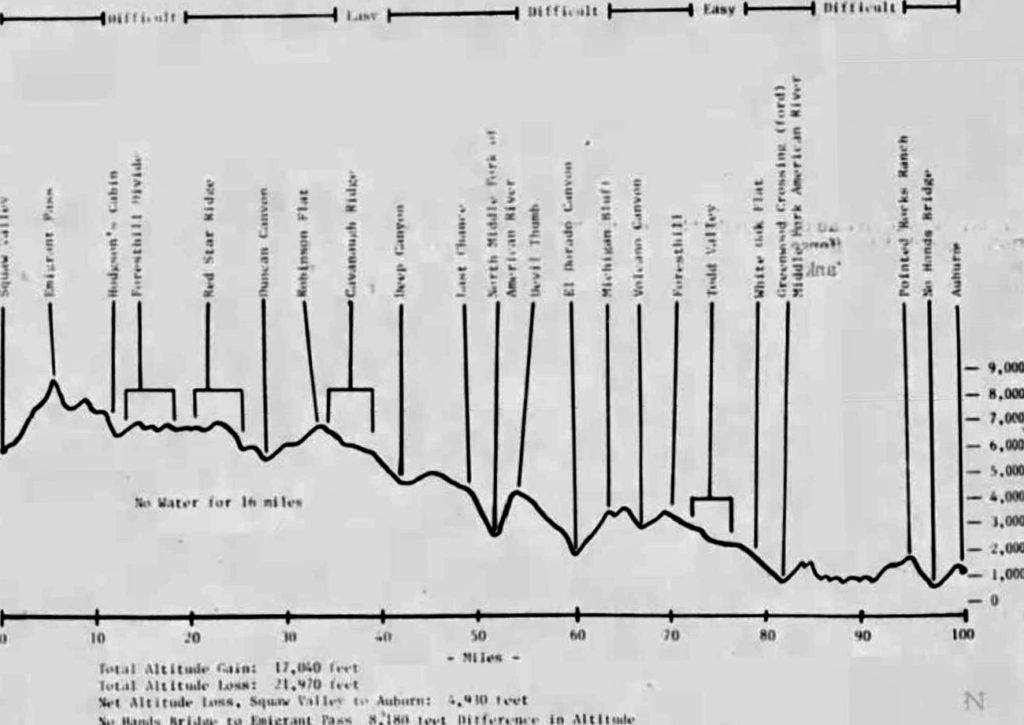

Truth: Western States gets the credit/blame for the medical/weigh-in checkpoints that existed in ultras for years.


Yes, with their extensive experience with the veterinarian check points for the Ride, the Run organizers extended that practice to humans. For the 1978 race it was crazy, with six medical checkpoints interrupting runs taking vitals including blood pressure.
In 1991 ultrarunning legend Eric Clifton challenged the ultrarunning community to consider if medical weigh-in checkpoints were really needed during 100-mile races. He said, “weight station’s actual safety value is dubious. It may inform medical personnel that a runner may be getting into dehydration trouble, but this is something the runner already knows and could simply tell them. All runners know what it is like to run out of fuel and water; they do not need a scale to tell them. The medical checks were a good idea initially, but the sport has progressed beyond them” (UR 1/1991 33) This issue would continue to be debated for years and mostly stay in place during the 1990s, giving medical staff something to evaluate runners, and for most runners, it was something to be annoyed with.
Myth #17: The Western States Endurance Run introduced the first belt buckle into ultrarunning
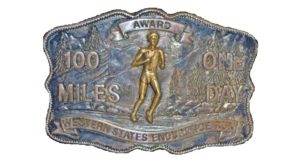

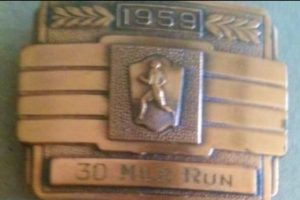

After the 1978 Western States 100 race, Robie was ecstatic and said they had “caught a bear by the tail.” He knew the race would become a very big deal and that Auburn would become the endurance capital of the world.
Both the Western States Trail Ride and the Western States Endurance Run became amazingly successful but curiously for both, their place in history has been overstated by some. Contrary to popular belief the Ride was not the first endurance ride and the Run was not the first trail ultra, nor the first mountain trail 100-miler. But the Western States Endurance Run quickly became recognized as the premier 100-miler in the world. Gratitude is given to those who paved the way for us to compete on mountain trails. Thanks go to Wendell Robie, the soldiers, Gordy Ainsleigh, the riders who organized both the Ride and the Run and race directors all over the world who have kept the traditions alive.
For many more details of the early years of Western States 100, see: Western States 100 Beginnings
Sources:
- AERC History
- Western States 100-mile Endurance run website
- Results and history of the Tevis Cup
- Auburn Journal, Sep 24, 1931, Jan 27, 1955, Aug 23,28, Sep 27, 1956,
- The Placer Herald (Rocklin, CA) Oct 3, 1931, Aug 16, 1956,
- The Press-Tribune (Roseville, CA), Jan 27, 1955
- The Orlando Sentinel, Mar 18, 1955
- Reno Gazette-Journal, Aug 17, 1956, Jul 27, Nov 11, 1961
- The Bridgeport Telegram (Bridgeport, Conn), Sept 6, 1955
- Auburn Journal, May 18, 1967, Jul 20, 1972, Feb 1, 1974, Jul 31, 1974, Jul 18, Aug 3, 1977, Jul 11,13, 1979, Jun 26, 1986, Jun 19, 28, 1978
- Hattiesburg American, Jul 30, 1978
- Auburn Journal, Aug 3, 1972, Section C, “Camera Highlights of the 100-Mile Ride – And Walk!”
- Fort Riley Post, “Seven Air Defenders finish 100-mile hike,” August 11, 1972, 1-2
- 2017 interview with rider, Hal Hall, 30-time finisher and past member of the Western States Trail Foundation.
- 2017 interview with rider, Rho Baily, past member of Board of Governors for the Tevis Cup.
- 2017 interview with Shannon Yewell Weil, co-founder of Western States 100-Mile Endurance Run and Trustee for 30 years.
- 2014 Western States history presentation by Shannon Yewell Weil at the 2014 Western States Training Weekend. This Will Never Catch On: The birth of an Icon
- 2012 Gordy Ainsleigh podcast
- Bill G. Wilson, Challenging The Mountains: The Life and Times of Wendell T. Robie
- 2017 interview with finisher, Ken Kruzel
- 2017 interview with finisher, David Lenau
- 2018 interview with photographer, Joe Hindley
- 2018 interview with soldier Alan Pinciaro
- Western States Eundurance Run 2018 Program
- Obituaries for Gregory Belgarde and Robin Sampson

